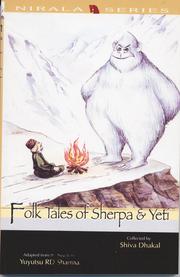
Trance, Initiation and Psychotherapy in Nepalese Shamanism by Inderjeet , Larry G. Peters, Nandita Chatterje
Result of lifetime’s researches in the
Himalayas,-Trance is a meticulous study exploring the hidden terrains of
Tamang and Tibetan Shamanism. An exquisite fusion of creative writing and anthropological research, the book evaluates the relevance of shamanic practices in a modern-day Nepal. Divided into four major sections, trance’ opens with a study of phenomenology of Shamanism as a spiritual discipline. Shamanism, Dr. Peters claims, is humankind’s first mystical tradition. It is a cross- cultural phenomenon. Shamans were the first to explore the inner space in a disciplined way. Shamanism, he adds, overlaps with, and is at the origin of other younger spiritual traditions, like Yoga,
Vipasana and Tantra which had continued the development of the disciplines of spiritual transformation. “The shaman’s mystical path,” in Dr. Peters’ words, “is an archetype, a universal pattern. It is not a prehistoric or a dead artifact but a living fossil possessing the same vital psychological foundation as later mystical traditions. Against this ideological backdrop, Dr. Peter ventures to study the cultural archetype of what it is to be a shaman in a Nepalese society and finds out that Tamang shamanic initiatory process comprises a psychotherapeutic system. The chapter that follows documents rare letters he sent home to his friends. These letters tell us of remarkable shamans that he met during his anthropological fieldwork in Nepal. The chapter next effortlessly sketches the visions of Nepalese mindscape during Peters’ journey to Kalinchowk shrine with Aama Bambo, a Tamang shaman Focussing on the transformative nature of
mystical experiences in Tamang shamanism, the author moves ahead to discuss the Tibetan healing rituals of Dorje Yudronma, a fierce manifestation of feminine cosmic force. Despite reservations on
Lhamo‘s intensely aggressive style of healing, Dr Peters seems to be in awe of her magical abilities and her para normal knowledge. Peters interprets Lhamo’s violent exorcisms as psychothera-peutic procedures aimed at breaking down the patient’s ego defenses and introducing psychological crisis. A full length chapter is devoted to Karga Puja ritual, a dramatic event, successful in treating indigenous categories of mental illness. The book ends with a survey of shamanism and medicine in developing Nepal. Shamanism, Dr. Peters suggests, is not antithetical to modern medicine. “In fact with proper training the shamans can even come to spread medical aid inasmuch as they already recognize their limitations in the treating of certain illness and take an active part in getting their clients to seek such treatment”.
Other book by the same aothor, Tamang Shamans: An Ethnopsychiatric Study Of Ecstasy And Healing In Nepal by Larry Peters.
Cover photo of the book.
Dr. Larry Peters is a world renowned scholar and initiated shaman in the
Tibetan tradition. He was the recipient of the Regent’s Fellowship at the University of California and a post-doctoral fellow of the National Institute of Mental Health. Dr. Peters holds advance degrees in both Anthropology and Psychology. He has conducted ethnographic fieldwork in Nepal, China, Mongolia, and Siberia and is a research associate of the Foundation for Shamanic Studies.





